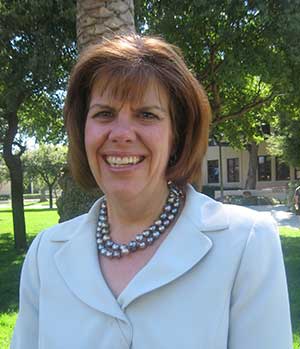I organize several networking events each year for Santa Clara Law students. These are marvelous opportunities for students to meet practicing lawyers and judges. During each event, I sometimes notice students no longer mingling and engaging in behaviors to while away the time at the event. These can include lingering for an excessive amount of time near the refreshments, or spending time in a back corner intently studying attorney bios, artwork or pictures for a prolonged period. (The picture of the aquatic center is just not that interesting!) When I notice a student who looks like they are regrouping, I try to ask them if I can help facilitate their networking goals.
Sometimes, I learn that the student has been networking extensively, and just needs a break. Other times, the student expresses that he or she attempted to engage in networking conversations, but was a little confused about how to do so. This article is written for anyone who needs a few tips for entering into networking conversations.
Get the Right Mindset
If walking into a room full of strangers — many of whom seem to know each other — is a little daunting, remember that they are there to expand their network as well! That means that they need to meet people who they have not already met. In particular, lawyers attending Santa Clara Law events are doing so to meet current students – the next generation of Santa Clara Law alumni. In fact, many of them have been asked by their employer to meet students to reinforce the organization’s brand and build its recruiting pipeline on campus.
Look for the Lone Wolves
The person who is standing by themselves – unless they appear to be engrossed in their text messages or emails — is often one of the easier people to approach. That person wants to meet new people just as much as anyone else, and may be uncertain about whom to approach. Simply walk up to that person, shake his or her hand, and introduce yourself.
Walk on By
If you see two people, engrossed in deep conversation, follow Dionne Warwick’s advice and Walk on By. You need to observe body language to know whether or not a group of two is open to another person joining their conversation. I tend to look down at the ground and at a mid-level. If their shoes are pointing towards each other and their hands are involved in gesticulation, take Dionne’s advice – Walk on By. Those two people are engaged in a conversation they want to keep closed for a period of time. However, if their shoes are pointed outwards and their body language is more relaxed, those two people are open to an additional person joining their conversation. (In fact, they may even be winding down their conversation and ready to meet the next person.)
Take the Plunge and Listen
Groups of three, four or more people are generally easier to join. The larger the group, the easier it is to join into conversation, but the harder it is to connect with everyone in it. How do you break into a larger group conversation? My strategy is to either listen for a short amount of time, wait for a slight end to a thought and then to introduce myself and ask for permission to listen in on the conversation. No one has ever said “no,” and generally I get asked a question about myself before the conversation continues its evolution.
Alternatively, if the group is very large, I will introduce myself to the person standing next to me; ask if that person knows the other people in the group and if they wouldn’t mind introducing me. I get to know that person and get the benefit of being introduced by one of the “insiders.” I have never encountered anyone who refused to do so and generally get asked a question by one of the group members. After responding and then listening for a while to pick up the conversational thread, I can add to the conversation.
Use these tips and at that next Santa Clara Law networking event, I hope to see all of the law students who want join into conversation talking to alumni and friends of the law school!

Vicki Huebner, Assistant Dean for Law Career Services, Santa Clara University School of Law
Vicki Huebner is the Assistant Dean in the Office of Career Management at Santa Clara Law. She is a seasoned career services professional and is a frequent speaker and author for industry related publications and meetings and holds appointed and elected positions in NALP, the Association of Legal Career Professionals. Prior to entering the career services profession, Vicki practiced civil litigation in Huntington Beach, California and served as a judicial law clerk to the Honorable Ronald M. Holdaway of the United States Court of Veterans Appeals in Washington, DC. Vicki earned both her JD and BA degrees from Brigham Young University in Utah.